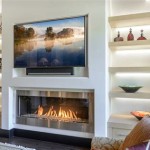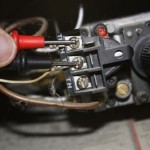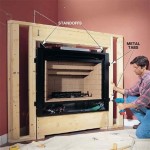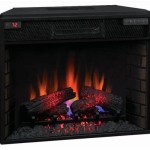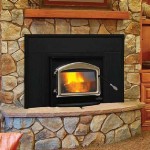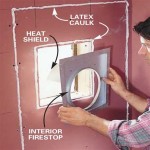Forged Fireplace Tools: A Legacy of Craftsmanship and Function
Fireplaces have long been a focal point in homes, providing warmth, light, and a gathering place for family and friends. Accompanying this central feature are the essential tools that allow for the safe and efficient management of the fire. Forged fireplace tools, distinguished by their durability, aesthetic appeal, and historical significance, represent a pinnacle of blacksmithing and design.
Unlike mass-produced, stamped metal tools, forged fireplace tools are created through a process of heating and shaping metal using traditional blacksmithing techniques. This method results in tools that are significantly stronger and more resistant to wear and tear. The forging process also allows for intricate designs and personalized details, transforming functional items into works of art. These tools are not merely utilitarian; they are often considered heirlooms, passed down through generations and appreciated for their enduring quality and historical value.
The Forging Process: Transforming Metal Through Heat and Skill
The creation of forged fireplace tools is a labor-intensive process that demands precision, skill, and a deep understanding of metal properties. The process typically begins with the selection of appropriate metal stock, often steel, chosen for its strength, heat resistance, and ability to be shaped. The metal is then heated in a forge, a specialized furnace capable of reaching extremely high temperatures, until it becomes malleable.
Once heated to the desired temperature, the blacksmith uses a variety of tools, including hammers, tongs, anvils, and specialized shaping tools, to manipulate the metal into the desired form. The blacksmith repeatedly heats and shapes the metal, gradually refining the design and addressing any imperfections. This process, known as forging, involves a combination of striking, bending, twisting, and drawing out the metal to achieve the final shape and dimensions.
One of the key aspects of the forging process is work hardening. As the metal is hammered and shaped, its internal crystalline structure becomes more aligned, increasing its strength and resistance to deformation. This process is crucial for creating tools that can withstand the rigors of repeated use in a high-heat environment. The skill of the blacksmith lies in understanding how to manipulate the metal to achieve the desired shape and properties while avoiding overworking or damaging the material.
After the forging process is complete, the tools undergo a series of finishing steps. These may include grinding, filing, and polishing to remove any imperfections and create a smooth, aesthetically pleasing surface. The tools may also be heat-treated to further enhance their strength and durability. Finally, a protective coating, such as oil, wax, or paint, is applied to prevent rust and corrosion.
The Essential Tools: Functionality and Design
A typical set of forged fireplace tools includes a poker, shovel, tongs, and a brush, each designed to serve a specific purpose in managing the fire. While the basic function of each tool remains constant, the design and aesthetic details can vary widely, reflecting the skill and creativity of the blacksmith.
The poker is used to stir and rearrange the burning logs, ensuring proper airflow and combustion. It is typically a long, slender tool with a pointed or hooked end. Forged pokers often feature intricate twists, curves, or decorative elements along the shaft, adding to their visual appeal. The handle is designed for a comfortable and secure grip, allowing the user to manipulate the burning logs with ease and precision.
The shovel is used to remove ashes and embers from the fireplace. It is typically a flat, scoop-shaped tool with a long handle. Forged shovels are often constructed with reinforced edges and a sturdy construction to withstand the weight of accumulated ashes. The handle may be ergonomically designed for comfortable lifting and dumping. Some shovels feature decorative patterns or engravings on the blade, adding a touch of elegance to this utilitarian tool.
Tongs are used to grasp and move burning logs with precision. They typically consist of two hinged arms with gripping jaws at the end. Forged tongs are designed to provide a secure grip on the logs, preventing them from slipping or falling. The handle is often designed for comfortable and safe operation, even when dealing with hot logs. Some tongs feature specialized jaws designed for specific types of logs or fuel. The design can range from simple and functional to elaborate and decorative, reflecting the blacksmith's artistic vision.
The brush is used to sweep up ash and debris from the hearth. It typically consists of a handle with a cluster of bristles at the end. Forged brushes often feature a wooden handle that is carefully shaped and finished for a comfortable grip. The bristles are typically made of natural fibers or durable synthetic materials that can withstand the heat and abrasion of sweeping ashes. The brush may be adorned with decorative elements, such as carved handles or inlaid details, adding to its aesthetic appeal.
The stand or rack that holds these tools is often an integral part of the set, providing a convenient and organized place to store the tools when not in use. Forged tool stands can range from simple, functional designs to elaborate, sculptural pieces that enhance the overall aesthetic of the fireplace. The stand is typically constructed with a sturdy base and hooks or loops to hold the tools securely. The design may incorporate decorative elements, such as scrolls, leaves, or animal motifs, adding to its visual appeal.
Materials and Aesthetic Considerations: Blending Functionality with Art
The selection of materials and the incorporation of aesthetic details are crucial aspects of creating forged fireplace tools that are both functional and visually appealing. Blacksmiths often experiment with different types of metal, finishes, and decorative techniques to achieve the desired aesthetic effect. The choice of materials can significantly impact the durability, weight, and overall appearance of the tools.
Steel is the most common material used for forged fireplace tools, due to its strength, heat resistance, and ability to be shaped. Different types of steel, such as mild steel, high-carbon steel, and stainless steel, offer varying degrees of strength, corrosion resistance, and workability. Blacksmiths carefully select the appropriate type of steel based on the specific requirements of the tool and the desired aesthetic effect.
In addition to steel, other metals, such as iron, copper, and brass, may be incorporated into the design of forged fireplace tools. These metals can be used for decorative accents, handles, or other components that add visual interest and contrast. The use of different metals can create a unique and distinctive look, reflecting the blacksmith's creativity and attention to detail.
The finish applied to forged fireplace tools can significantly impact their appearance and durability. Common finishes include oil, wax, paint, and powder coating. Oil and wax finishes provide a natural, rustic look while protecting the metal from rust and corrosion. Paint and powder coating offer a wider range of colors and textures, allowing for greater customization of the tools' appearance. The choice of finish depends on the desired aesthetic effect and the level of protection required.
Decorative techniques, such as twisting, bending, hammering, and engraving, can be used to add visual interest and personality to forged fireplace tools. Blacksmiths often incorporate these techniques to create intricate patterns, textures, and details that enhance the aesthetic appeal of the tools. The use of decorative techniques can transform functional objects into works of art, reflecting the blacksmith's skill and creativity.
The design of the handles is another important aesthetic consideration. Handles can be made of wood, metal, or other materials, and they can be shaped and finished in a variety of ways to create a comfortable and visually appealing grip. Wooden handles are often preferred for their warmth and natural beauty, while metal handles can be designed to complement the overall aesthetic of the tools. The shape and size of the handle should be ergonomic and comfortable to hold, ensuring safe and efficient use of the tools.
Ultimately, the design of forged fireplace tools is a balance between functionality and aesthetics. The tools must be strong, durable, and efficient at performing their intended tasks, while also being visually appealing and reflecting the individual style of the blacksmith. The use of high-quality materials, skilled craftsmanship, and thoughtful design details can result in tools that are both functional and beautiful, enhancing the warmth and ambiance of the fireplace.

Forged Fireplace Tools Set 4 Pieces Singapore

Forged Iron Fireplace Tool Set Western Passion

Compact Size Hand Forged Fireplace Tool Set Black Plow Hearth

Hand Forged Iron Compact Fireplace Tool Set Tongs Shovel Broom And Stand Shepherd S Hook Style Wood Stove Firepit

Forged Iron Soldiered Row Fireplace Tool Set Vintage Plow Hearth

Fireplace 6 Piece Tool Set Includes Shovel Brush Tongs Match Holder Stand Or Wood Stove Blacksmith Metal Art Mitty S

Forged Fireplace Tools Ponderosa Forge Ironworks

Hand Forged Iron Fireplace Tool Sets Plow Hearth

Set Of Hand Forged Fire Place Shovel Tongs And Brush Fireplace T Old West Iron

Craftsman Fireplace Tool Set Pilgrim Home Hearth
Related Posts


